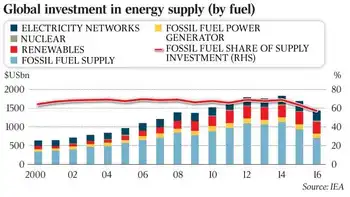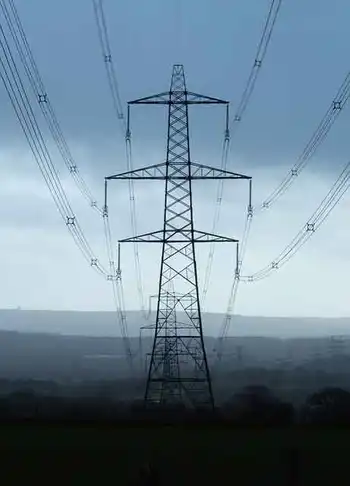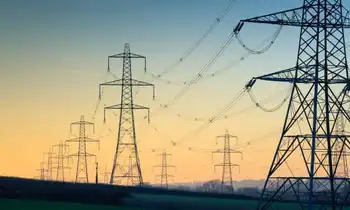Battle over Indiana utility continues
By Crosscut Seattle
Protective Relay Training - Basic
Our customized live online or in‑person group training can be delivered to your staff at your location.

- Live Online
- 12 hours Instructor-led
- Group Training Available
ItÂ’s a struggle that's been taking place for months. City officials say they own the utility and the lease that was signed in the 1970's acknowledges that fact. I & M officials say according to state law passed in 1980, the utility should be theirs.
Because things are at a stalemate, city officials have issued the letter of default to I & M saying the utility provider has failed to meet the terms of its lease. Mayor Tom Henry says I & M has defaulted by failing to provide emergency backup electric service to the city's Three Rivers Filtration Plant and the Saint Joe dam. Second, I & M did not work unilaterally with the city when replacing facilities and equipment. Finally, I & M has not provided information needed for management of the transition of the electric utility from I & M back to the City of Fort Wayne.
State Representative Win Moses, who has worked closely with Mayor Henry throughout this process, says "I & M is a good company. They work hard. The debate here is do they deserve up to a 100-million dollar bonus. That's essentially what they are trying to take. I don't think so. They're saying we want something extra, we want to take the remainder of this lease and we want to keep it. It has up to a hundred million dollars of value. They're not entitled to a bonus like that."
Both leaders also reaffirmed their determination to fight for the rights of Fort Wayne ratepayers and taxpayers, and to defend the community's ownership of its electric utility and the opportunity it represents to serve its customers.
"Fort Wayne's electric utility is a potential $100 million community asset," stated Mayor Henry. "Our utility was leased, but never sold, to I&M. For 35 years, I&M has had access to that asset and enjoyed the privilege of serving our customers. After such a long time, I decided it made good business sense to revisit the deal and ensure that our citizens receive fair value moving forward. I believe a little competition is good. What is important to note is that when the lease ends, I&M must return a viable electric utility system to the City. What troubles me is that I&M is not ready to do that, and the clock is ticking."
"I&M wants you to believe the Fort Wayne electric utility belongs to them, but the lease is clear," noted State Rep. Moses. "It belongs to the people. When they talk about rates skyrocketing and poor service with a new operator, they're using scare tactics to cover the fact they're trying to steal our system. I&M has never paid one penny for the right to serve our customers. Their behavior is unfair. It's also something unheard of in the industry."
With this legal notice, the City is taking action to protect its electric utility system, its rights under the existing lease, and of greater importance, its customers and citizen-owners. The letter was sent on August 20. It describes areas in which I&M has not met its basic obligations to the people of Fort Wayne.
The City's letter to I&M outlines the following defaults under the lease:
· Failure to provide emergency services. I&M failed to provide emergency backup electric service to the City's Three Rivers Filtration Plant and to the St. Joe Dam and Pumping Station. The City spent nearly $8 million to address and mitigate those failures. I&M's recklessness left some of this community's life-sustaining services vulnerable.
· Refusal to coordinate with the City concerning use and waste of leased property. Rather than coordinating with the City as required, I&M unilaterally replaced or retired facilities and equipment undermining the ability to guarantee the delivery of a viable, independent electric utility system to the City upon conclusion of the lease. Additionally, the company continues to modify the system at an increasingly aggressive rate in an attempt to obliterate it, despite the City's election to take it back.
· Refusal to provide essential information and data to the City. To plan for and manage the transition from I&M to the City, the City created a working group. On numerous occasions, the group asked for data and information from the company to make those preparations. Each of the City's requests was rebuffed. Simultaneously, I&M criticized the City in public for not presenting a detailed transition and operational plan, something that could only be developed with the information that I&M was, and is, holding hostage.
"In spite of an extensive public relations campaign to enhance its image, expanded corporate generosity to buy goodwill and protests to the contrary, I&M has not met the terms of its lease with the City, been honest with the people of Fort Wayne or negotiated in good faith," added Henry. "The company has refused to provide information necessary to prepare for an orderly transition. It has not coordinated on the use of leased property. And of greater concern, I&M has not installed the facilities necessary to provide emergency electric service to the City's water filtration and sewage treatment plants, putting those fundamental services, and our public health and safety, at risk. Safeguarding our community is my highest priority. These are failures I cannot allow to go unchallenged."
The letter also identifies ways to resolve the defaults and promote an efficient transfer of the system, including payments, assurances that I&M will address specific issues, explanations of its actions, and the provision of the vital information required by the City.
The City suggested mediation to I&M some months ago and remains open to resolving its differences with the company through dialogue and mediation.
"Over these many years, I&M's relationship with the City has been a positive one," concluded Henry. "Although we could not come to a new agreement through our past negotiations, we value our long association and the good service that I&M has provided. Even now, I know that we are mutually pledged to a smooth transition and to maintaining the delivery of high-quality electric service to Fort Wayne customers at all times."
The City's current lease with I&M was signed on September 13, 1974. It will end on March 1, 2010. At the beginning of June, Mayor Henry announced that the City had elected to exercise its option to take its municipal electric utility to the market through a competitive bidding process that would allow for the selection of a new operator.











